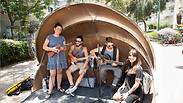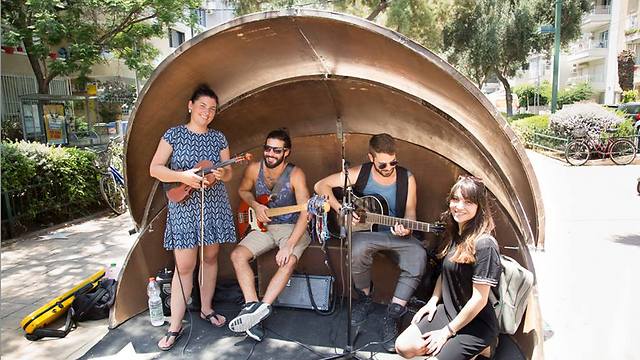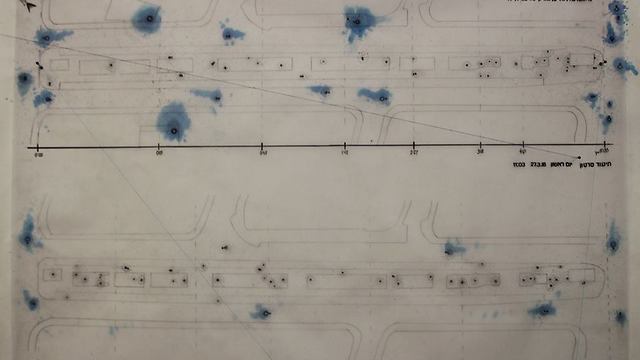

Israeli innovation cleans up noise pollution
A new Israeli design for urban mini-amphitheatres helps cities clean up noise pollution by providing a dual use: It helps to block out noise bleeding to the street while providing an appealing venue for street performers to practice their trade without interfering with pedestrians
Construction, traffic noise, and airplanes flying overhead: Noise pollution the world over lessens quality of life and brings ugliness to what would otherwise be beautiful urban landscapes. To add to this cacophony of sounds are street performers—musicians, actors, artists—all trying to work their trade in the midst of the hustle and bustle of cities the world over.
To fix this problem, one Israeli has come up with an ingenious solution. Called "mini-amphitheatres," they are aesthetically-pleasing, sidewalk-size-appropriate amphitheatres, which can be used not only to block out unpleasant street noises, but also to provide a venue for buskers to perform, increasing the cultural landscape of a city.
Aviv Even, a student at the Shenkar School of Engineering and Design at Tel Aviv University, designed the mini-amphitheatre. As a Tel Aviv native, she has been surrounded by the clamor of sounds which accompany a big city, and wanted to make a positive impact in both reducing noise pollution and improving the quality of life for the city's residents
"I sought to determine which sounds were more pleasant for people and which were more grating—what caused people to want to be in an area, and what caused them to want to leave. Something that I discovered is that noise pollution is just as effective at deterring people from being in an area as is physical pollution," she said.
Standing on the corner of Ben Gurion Boulevard and Dizengoff Street in Tel Aviv, she used a decibel reader to determine whence the loudest sounds on the street were coming and what was causing them. She mapped these areas out and used her maps to determine the best way to mitigate these sounds.
That’s how she came up with the idea for the mini-amphitheatre. "I wanted to find a way to reduce noise pollution, while at the same time adding pleasant sounds to the surrounding area."
The mini-amphitheatre is able to direct the sounds of the people who are performing in it—whether they be buskers performing musical instruments or street actors giving a performance—to an audience without disturbing the other people living or walking in the surrounding area.
"Sound naturally goes up, so by performing inside of these mini-amphitheaters, the sound is able to be directed towards an audience more fully. This also eliminates the need for speakers, as the sound is naturally amplified."
To design the structure, Even spoke to street performers to determine their needs, thereby creating the ideal size and depth of the shell so that it would be not only comfortable for the buskers to perform in, but also disrupt the surrounding foot traffic as little as possible.
Even has already sold one of her portable mini-amphitheatres, but she hopes that in the near future the city of Tel Aviv and other cities around the world will use her design to not only beautify their cities visually, but also provide a way to mitigate noise pollution and increase positive vibrations.


















